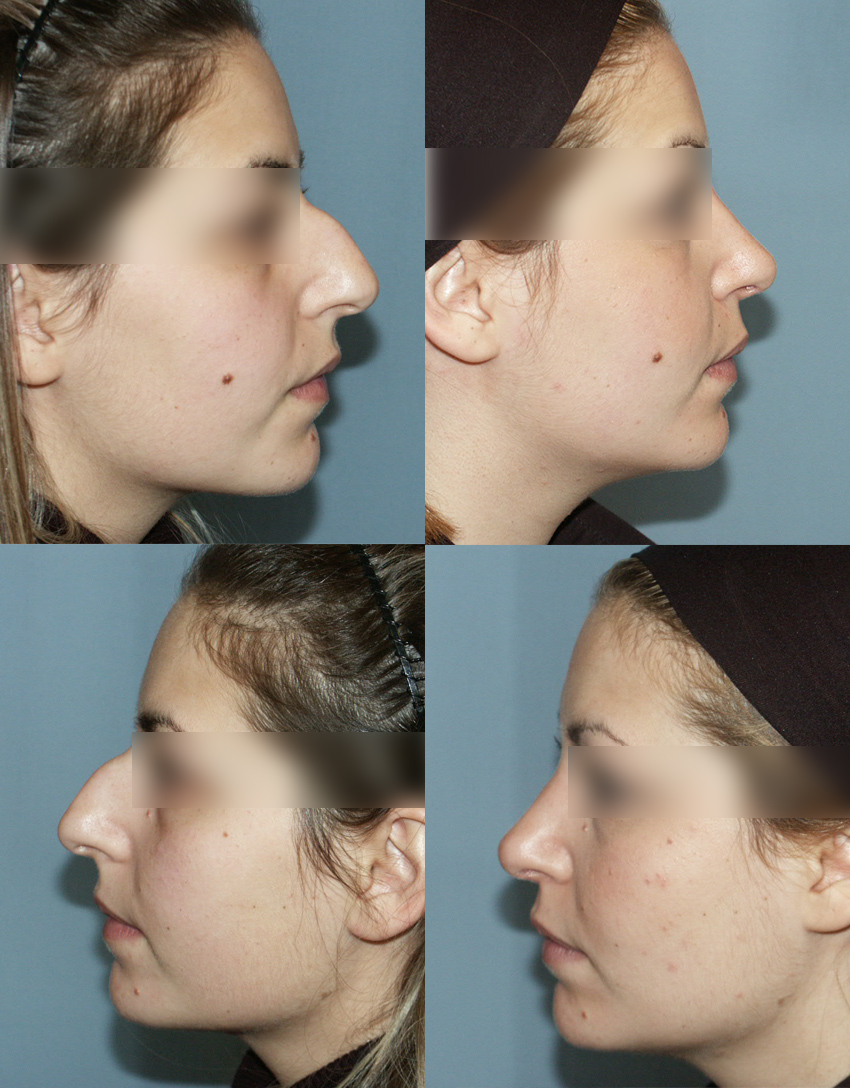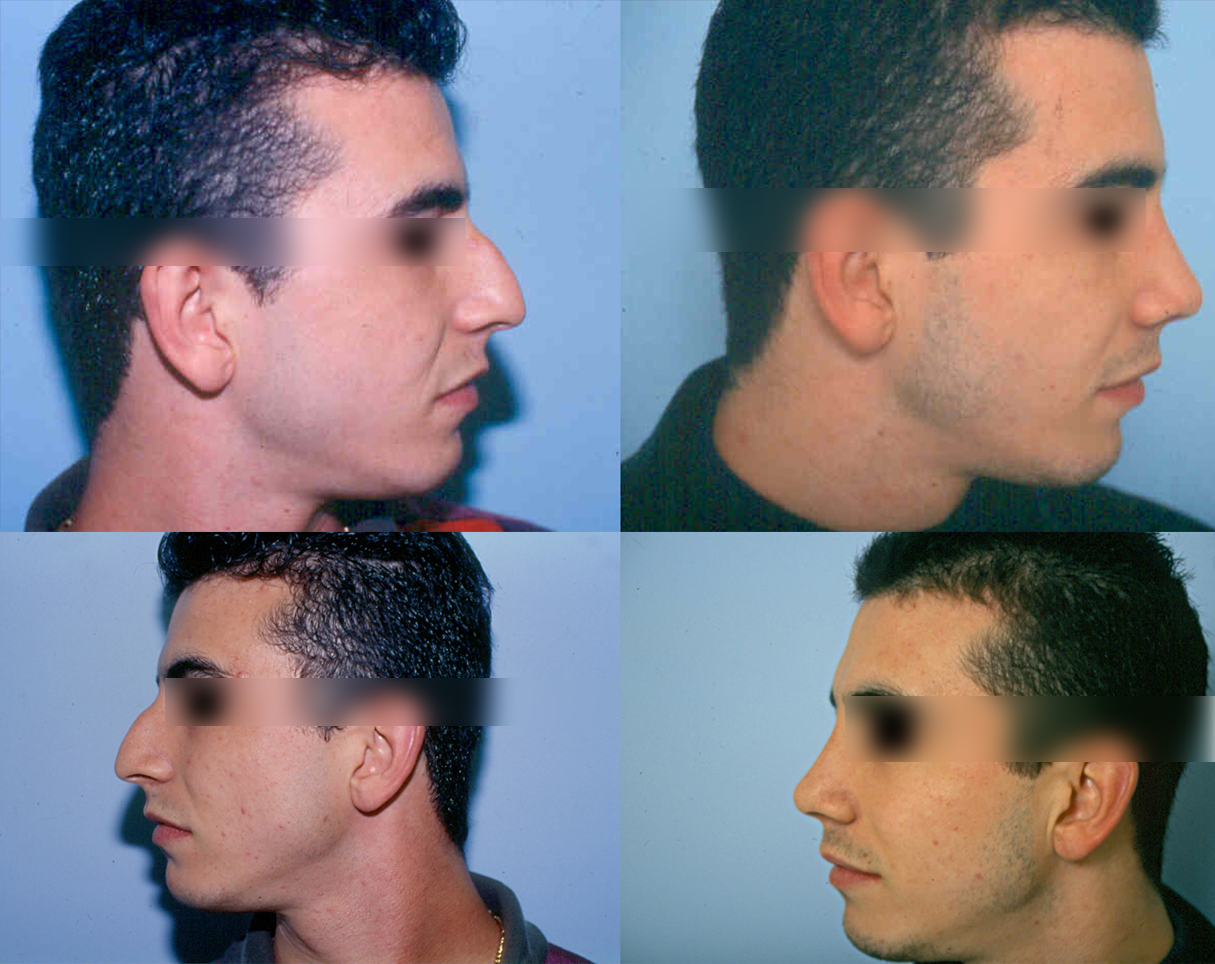
Rhinoplasty: The aim of this surgery
Rhinoplasty is the operation that affects the most a person’s appearance.
The nose is the central feature of the face and any abnormality in the shape or size affects adversely its appearance. A successful rhinoplasty changes the appearance of an individual, improves its psychology and boosts self-confidence.
Moreover it is not only an aesthetic anatomical element but also a functional element, serving as a breathing organ. Deviated nasal septum or nasal turbinate hypertrophy can cause respiratory distress and needs to be restored during the same surgery.
Hence, the surgeon must have the necessary experience to accurately determine the anatomic causes of the deformity and disfunction as well as the technical ability to correct them.
Description of the procedure
The surgery is performed under general anesthesia. There are two techniques :”closed” and “open” rhinoplasty. In the first case surgical incisions are positioned inside the nostrils, while in the second case a small additional incision is required in collumela, which disappears in a short time.
The “closed” rhinoplasty is indicated for simple cases and can not solve all problems.
The “open” rhinoplasty s used to solve difficult problems, because with this technique we have direct vision and access to the frame of the nose and can solve all the associated problems with high accuracy.
Furthermore, the rate of reoperation for correcting postoperative problems after “open” rhinoplasty is minimum (3% -4%), compared with the rate of reoperation after “closed” rhinoplasty (35% -40%).
For all these reasons, the “open” rhinoplasty is the prevailing trend in plastic surgery as a method of choice.
The patient is discharged the next day of the surgery, having a splint to protect the operated nose and tampons into the nostrils. Modern tampons allow you to breathe through them. Tampons are removed on the 5-6 postoperative day and splint on the 9th to the 10th day.
Bruising and swelling in the eyelids and the cheeks are considered normal postoperative outcomes and subside within 1-2 weeks.
Possible hypoesthesia at the nose and the upper lip are restored automatically. Initially nasal breathing may be hampered due to swelling of the external walls and mucosa. After a period of about six months the desired result can be observed. Rhinoplasty generally has no pain.
Instructions after surgery
It is recommended that for the first few days after surgery to:
- Sleep with your head held high (2 pillows).
- Avoid alcohol and smoking because they both delay healing.
- Be careful when brushing your teeth.
- Talk and laugh as gently as possible.
- Only wipe off the mucosal secretions and wound during the first days.
- When sneezing, have your mouth wide open.
- After the removal the splints, do not blow your nose loudly in order to avoid bleeding.
After a period of about 3 months the desired result can be observed.
Strict adherence to guidelines is essential for good results.
Please ask us for everything you seem important.
Postoperative results of operations you can see during your visit to the clinic.
Picture Gallery


Possible complications
Bleeding from the interior of the nose is very rare. Any possible nasal respiration problems can be easily dealt with. However, it is possible that the scarring inside the nose causes nasal breathing problem again as they can change the external shape of the nose and lower the tip of it.
In the region of osteotomies excess bone may be created. Also in cases of thin skin can after the edema have subsided the cartilage and bone ends.
Unlike, in cases of particularly thick skin with open pores a bulky appearance on the top of the nose may be seen. Although these cases are very rare, a corrective surgery can fix them.
In particularly pronounced disturbances , such as on cleft lip and cleft palate, posttraumatic and postoperative deformities it is often not possible to achieve the desired result with a single operation. Usually an additional minor surgery under local anesthesia may be required. Inflammation is extremely rare. Depressions of the skin and irritation of the collumela usually heal without complications. In rare cases, some redness of the skin may remain.
When a simultaneously correction of the nasal septum is required, a hole in the nasal septum may be created, which under certain circumstances may lead to dryness of the nasal mucosa, to opportunistic bleeding and sometimes to annoying noise when breathing.
